Mining on the Great Orme, Secrets Uncovered - Mwyngloddio ar y Gogarth, Datgelu Cyfrinachau
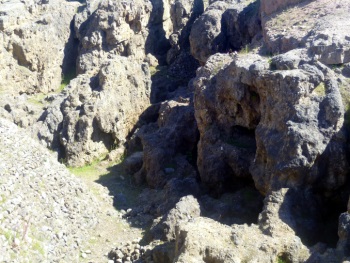
On the north coast of Wales next to the town of Llandudno stands the limestone headland of y Gogarth known in English as Great Orme. It is a nature reserve, rich in fauna and flora with significant and rare species of plants. Copper has been known to have been mined on the headland for many years with ore having been extracted until late in the 19th century. However, the hidden history of the area only started to be uncovered in 1987 when a landscaping operation was being undertaken. The archaeological discovery astounded everyone and caused not only the history of Great Orme to be re-evaluated but also the civilisation and structure of society of the people who had inhabited this land some 4,000 years ago. Excavations reveal that there were extensive mining activities dating back to the Bronze Age 4000 years ago.
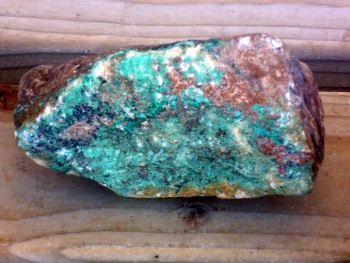
This was some 2000 years before the arrival of the Roman’s on the islands of Britain. The scale of mining for the valuable copper ore is remarkable. It demonstrates the civilisation of Celtic society at the time, a civilisation that it suited the subsequent Roman invaders and others since to seek to deny. Throughout Celtic Europe archaeology is uncovering more and more information about the advanced road structures, building techniques and technological ability of the Celtic peoples. Forcing a re-evaluation of previous texts that relied on Roman historical information. Their writings have to be viewed as containing the propaganda of the victors who seek to disparage all that goes before them. Something that was carried on by the Saxons who again tried to undermine Celtic civilisation as something inferior to their own. Unfortunately, this is a practice that some English politicians and historians continue today.
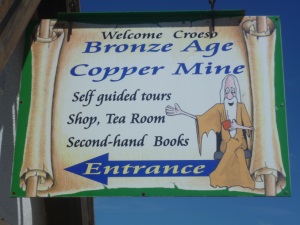
A visit to the Great Orme Ancient Mines provides a fascinating insight into the working conditions of our pre-historic ancestors as they sought to extract the valuable copper ore. The mines are open to the public and begin with an exhibition and film about the history of the site in the visitor centre. A model of a Bronze Age village can be seen and information about the mines is provided throughout the self -guided tour. It starts with introductory information in both Welsh and English:
Dechreuwydd mwyngloddio ar y Gogarth tua 4,000 o flynyddoedd yn ôl. Mwyngloddio brig oedd yr ymdrechion cynnar, dull ble’r oedd y copr gwyrdd malachit yn cael ei ddatgelu ar yr wyneb. Tynnwyd cannoedd o dunnelli o fwyn o’r lefelydd arwynebol cyn i’r mwynwyr orfod ei ddilyn o dan y ddaear. Roedd gan fwynwyr Oes yr Efydd amryw o daclau arbennig ar gyfer y gwaith. Defnyddiwyd cerrig o’r traeth oedd wedi eu dethol yn arbennig I’w defnyddio fel morthwylion, ac roeddent yn medru addasu esgyrn anifeiliaid i’w qwneud yn gynion ac ysgrafellau. Dros y blynyddoedd darganfuwyd o leiaf 2,500 o forthwylion cerrig a 35,000 o esgyrn yn y mwynglawdd.
Mining on the Great Orme began around 4,000 years ago. The earliest mining was open-cast, where the green copper ore malachite was exposed on the surface. Hundreds of tonnes of ore were extracted from these surface workings before the mines had to eventually follow the ore below ground. Bronze Age miner had a variety of tools available to them. Specially chosen stones from the beach would have been used as hammers, and animal bones would have been used as chisels and scrapers. Over 2,500 stone hammers and 35,000 bones have been found at the mine.
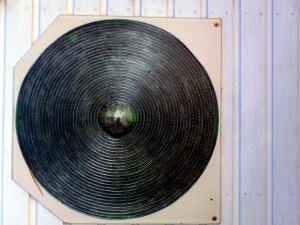
Over the years since the secrets of mine first began to be uncovered, more and more of this ancient site has been found. So that the impressive tunnels and caverns that can now be entered are just part of other yet to be discovered workings. This is now thought to be the largest prehistoric mine found in the world so far. The coming of the Bronze Age brought the Stone-Age to an end and in this area of northwest Europe it spanned a period from about 2,500 BC to beyond 1000 BC. This was followed by the Iron Age which continued to about 100BC. It is estimated that at least 1,700 tonnes of pure copper was produced from the mines in the Bronze Age and to give an indication of the scale of production this would have enabled the manufacture of 10 million axes. Many remarkable and beautiful items were crafted from bronze over this period, such as the Moel Siabod shield, which was found in a bog at the foot of Moel Siabod which is mountain in Snowdonia, North Wales. The shield, which is made from a single ingot formed into a sheet of bronze and measures 640 mm across.
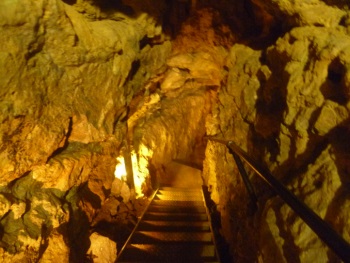
This is a fascinating site to visit set amongst the beautiful scenery of the North Wales coastline with the majestic mountains of Snowdonia standing to the south. The information given by the exhibition when entering the site gives a perfect introduction. This is followed by a fascinating and impressive self-tour of the incredible tunnels and caverns dug into the rock by our ancient ancestors so many thousands of years ago. Details of the opening hours and information on getting to the Great Orme Ancient Mines can be obtained from the Great Orme Ancient Mines' website.
- Welsh
- English
- Log in to post comments





